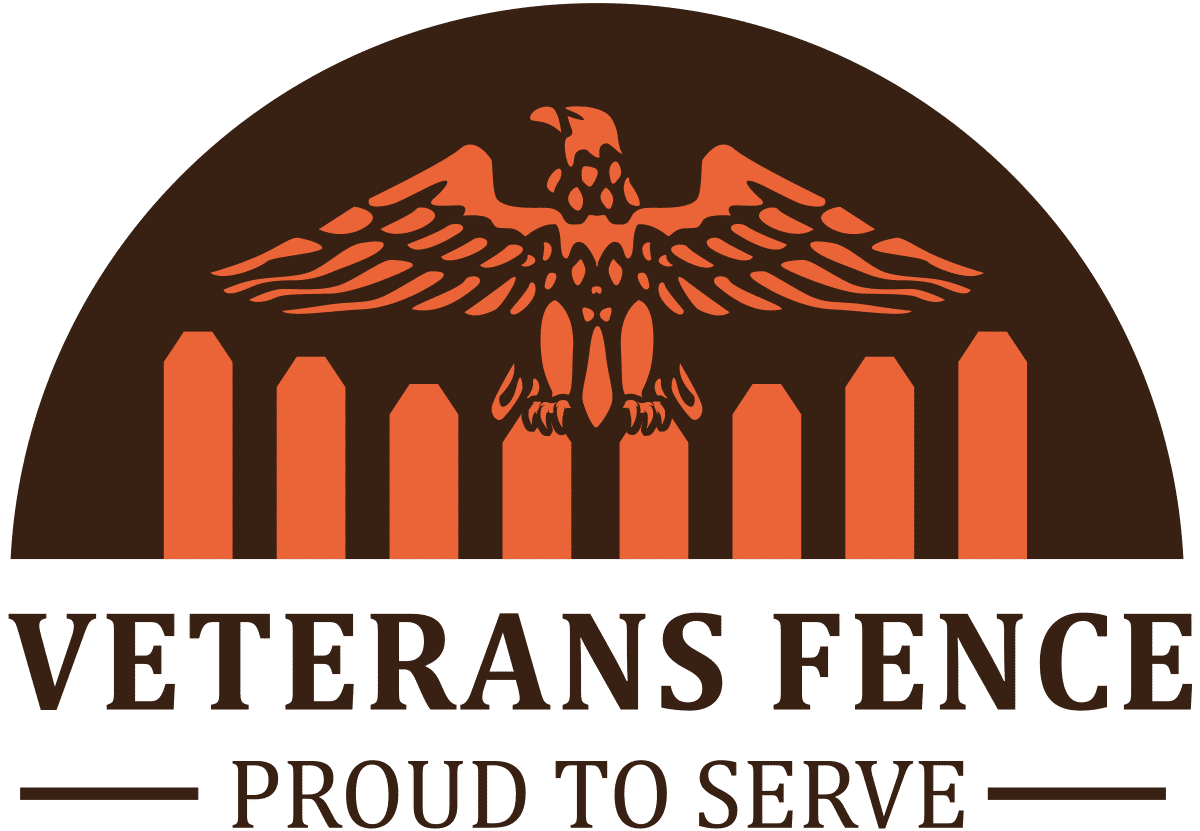Chain link fencing is a popular choice for property owners because it’s tough and excellent for security. But, at some point, you might find yourself needing to take it down. Maybe you’re planning a renovation, ready to swap it out for something new, or simply want to give your property a fresh look. Knowing how to remove a chain link fence can save you money when hiring professionals.
While DIY removal can work well for shorter, simple fences in good condition, more complex situations often require professional expertise. Deep concrete foundations, extensive rust, difficult terrain, or fences over 100 feet can turn a straightforward project into a challenging ordeal.
This guide will help you understand the removal process and recognize when it’s time to call in the experts, potentially saving you time, money, and frustration in the long run.
What Is the Structure of Chain Link Fences?
Before you start removing your chain link fence, it’s important to understand what you’re working with. Chain link fences are made up of several key parts that fit together to create a strong, secure barrier. Removing the fence becomes much more straightforward when you know how these components work together.
Let’s look at each part and its role in the fence’s structure:
- Fence Posts
- Serve as the backbone of the fence.
- Typically made of metal and installed at regular intervals for support.
- Anchored into the ground, often with concrete for added stability.
- Top Rails
- Horizontal bars that connect the fence posts at the top.
- Provide additional support to the structure.
- Help maintain the tension and alignment of the chain link fabric.
- Fence Fabric
- The characteristic mesh is often associated with chain link fences.
- Made of interwoven metal wires, creating a diamond pattern.
- Attached to the fence posts and rails, providing the main barrier.
- Fence Ties
- Metal wires or clips are used to attach the fence fabric to the posts and rails.
- Help secure the mesh, making sure it remains taut and properly aligned.
- Tension Bar
- A flat metal piece is inserted vertically at each end of a fence section.
- Used to distribute tension across the fence fabric evenly.
- Often secured to the posts to prevent sagging.
These components work in harmony to confirm the fence’s functionality and durability. Recognizing each part allows for easier disassembly and potentially smoother installation if needed.
Step-by-Step Guide to Removing a Chain Link Fence
Preparation
- Make sure you have the necessary tools. Gather essential tools like fence pliers, bolt cutters, a metal-cutting blade, and power tools to dismantle the fence effectively. Having the right equipment on hand will make the removal process smoother and quicker.
- Verify local regulations for fence removal or permit requirements. Check with local authorities or housing regulations to make sure you have the necessary permits before starting the removal. This step helps avoid potential legal issues or fines.
- Prioritize safety by wearing appropriate safety gear. Equip yourself with safety goggles, gloves, and a long-sleeved shirt to protect against sharp edges and debris. Proper gear is essential to prevent injuries during the dismantling process.
Dismantling the Fence
- Begin by removing the fence fabric. Use wire ties to carefully detach the mesh from the fence ties, starting from one end and working your way to the other. This initial step creates a clearance for the subsequent removal of structural components.
- Detach the top rails. Use fence pliers or wrenches to loosen and remove the top rails, separating them gently from the chain link fence posts. Confirm the entire length is detached to prevent any sections from remaining attached.
- Cut the metal posts using a metal-cutting blade. Utilize a metal-cutting blade to slice through the metal posts precisely, establishing a clean cut for easier extraction. This precision helps in managing post-removal while maintaining structural integrity for reuse if needed.
- Extract the chain link fence posts from the ground. Employ proper harness techniques, using a flat piece of metal as a base for post-removal to ease the posts from the soil. This method confirms minimal ground disturbance and maintains a clean working area.
Common Challenges in Fence Removal
- Deeply Set or Concreted Posts. Some fence posts are installed with deep-set foundations or encased in concrete, making them challenging to extract. This often requires additional tools or techniques, such as breaking up the concrete or using a mechanical harness to remove the posts.
- Rusted Components. Over time, metal parts can rust, making them difficult to disassemble. A power tool or wire cutter may be necessary to cut through these corroded areas, which can also require additional safety precautions to prevent injury.
- Tough Terrain. Uneven or hard terrain can complicate fence removal, as it may affect your ability to use tools effectively or pose safety risks. In such scenarios, specialized equipment or professional assistance may be needed to manage the challenges posed by the landscape.
- Heavy or Oversized Sections. Larger sections of fencing can be unwieldy and difficult to handle without assistance. Adequate planning and possibly additional manpower are essential to manage the removal of these heavier components safely.
- Tangled or Twisted Mesh. The chain link fabric might become tangled or twisted, complicating its removal. Careful untangling and precise cutting are required to prevent damage to surrounding areas or injury during dismantling.
- Adjacent Structures or Vegetation. Proximity to buildings, trees, or other structures can impede removal efforts. It’s important to approach these areas with caution to avoid collateral damage to adjacent fixtures or plant life.
When to Seek Professional Help
- Extensive Fence Size. If the fence spans a large area, removing it can be resource-intensive and time-consuming. Professionals have the manpower and tools to complete the job efficiently.
- Difficult Terrains. Uneven, rocky, or sloped terrains can complicate fence removal, posing challenges to stability and use. Experts are experienced in handling such conditions safely and effectively.
- Deeply Set or Concreted Posts. Posts that are deeply buried or set in concrete can be particularly challenging to extract. Professionals have the necessary equipment to remove these posts without damaging surrounding areas.
- Rusted or Damaged Components. Rusted or corroded fence parts can require special tools and techniques to dismantle. Hiring professionals confirms that these components are dealt with appropriately without risking injury.
- Lack of Tools and Equipment. Removing a fence requires specific tools, such as metal-cutting blades and harness equipment, which might not be readily available to everyone. Professionals come equipped with all the necessary gear to tackle any removal project.
- Time Constraints. If you’re under a strict timeline to complete the removal, professionals can expedite the process with their trained personnel and efficient methods.
- Safety Concerns. Complex removals can pose safety risks, especially if you’re unfamiliar with proper techniques. Engaging professionals minimizes risk and confirms the project is completed safely.
Safety and Environmental Considerations
- Safety Gear Usage. Always wear appropriate safety gear, including safety goggles, gloves, and long-sleeved shirts. These items protect against sharp edges, debris, and potential hazards during the removal process.
- Work Area Preparation. Make sure the work area is clear of unnecessary obstacles and clutter. This reduces the risk of trips, falls, and other incidents that can happen when maneuvering tools and fence materials.
- Proper Tool Handling. Use tools and equipment according to the manufacturer’s guidelines and make sure they are in good working condition. Misusing tools or using damaged equipment can lead to accidents.
- Environmental Disposal. Plan for the responsible disposal or recycling of fence materials such as metal posts and chain link fabric. This minimizes environmental impact and compliance with local regulations on waste management.
- Soil and Vegetation Protection. Be cautious about the surrounding soil and vegetation when removing posts from the ground. Avoid causing unnecessary damage by carefully extracting the posts to preserve the landscape.
- Noise and Vibration Management. Be mindful of noise levels and vibrations when using power tools, especially in residential areas. Consider the impact on neighbors and abide by noise regulations to prevent disturbances.
- Chemical Considerations. If using chemical solvents to remove rust or lubricate bolts, establish proper ventilation and follow safety instructions. Chemicals can pose health risks and should be handled with care.
Expert Fence Removals by Veterans Fence: Get Started Today
Taking down a chain link fence is more than just a task—it’s a chance to transform your space, unveiling new possibilities. With the right tools and a keen eye for detail, this journey from old to new can be both satisfying and rewarding. But when challenges appear, don’t hesitate to call in the experts. At Veterans Fence, we’re more than just a service; we’re a partner in helping you shape your environment with skill and safety.
If you’re considering removing or replacing a chain link fence and need expert assistance, connect with Veterans Fence for professional and reliable service. Our team is experienced in handling all types of fence removals, making sure the job is done safely and efficiently, no matter the size or complexity.
Call us now for a free estimate!




